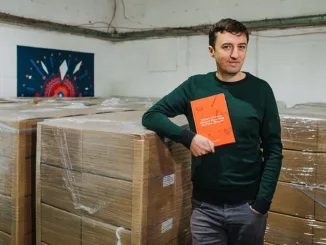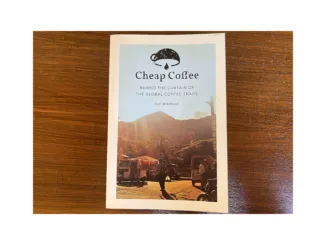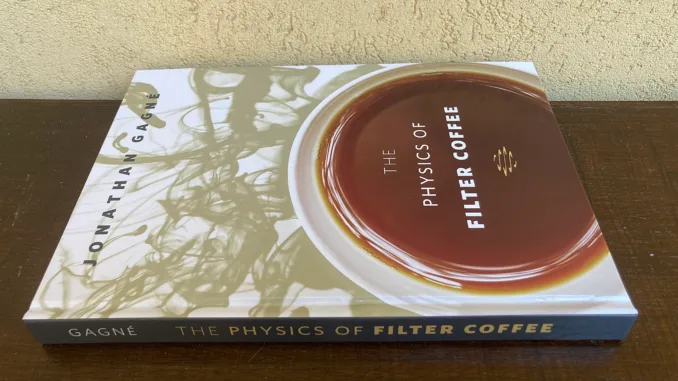
What does physics have to do with coffee brewing? Astrophysicist Jonathan Gagné wrote “The Physics of Filter Coffee“ to make the connections.
BY TANYA NANETTI
SENIOR ONLINE CORRESPONDENT
Photos by Tanya Nanetti
After discovering coffee through its different facets, thanks to books covering everything from history and terroir to best practices for preparing it at home, I got my hands on something completely different: “The Physics of Filter Coffee,“ written by Canadian astrophysicist Jonathan Gagné.
Teachable Physics
Physics was never my favorite in school, which is why I was quite excited to have the chance to (try to) learn it applied to something I love: coffee. Maybe I could kill two birds with one stone: find out more about coffee brewing and learn more about general physics.
There is no better way to introduce Jonathan’s book than his own words: “My goal in writing this book is to provide readers with a mental toolkit to better understand filter coffee brewing and how we can affect it,” he says in the introduction, adding that the book was not written to suggest the best brewing method or kettle, which is too subjective. Rather, he wanted to help readers explore the possibilities of coffee brewing (particularly percolation methods, the first type of brewing that Jonathan began to explore) more efficiently.
Then, Jonathan briefly tells the story of his blog coffeeadastra.com, written for coffee enthusiasts, which ended up being loved by an unexpected wider audience. It sowed the seed for writing “The Physics of Filter Coffee,“ which is aimed at coffee professionals and home baristas with no prior knowledge of physics or mathematics.
“… If some concepts go above your head or seem way too complicated, it will have been my failure to make them clear enough, not your failure of understanding,” Jonathan shares, instantly intriguing me and putting me at ease.
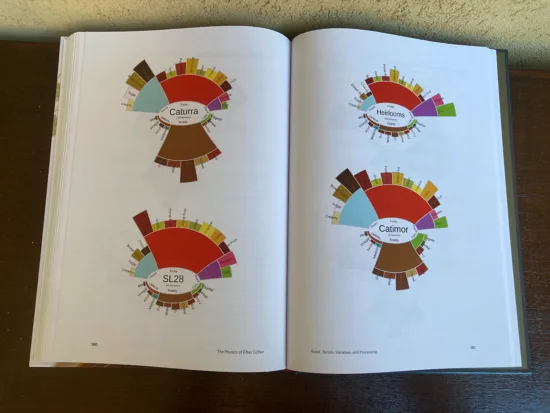
First Impressions
Without further ado, it’s time to begin reading. I start with the useful glossary, perfect for helping those who don’t yet read technical books or blogs on coffee extraction, but also useful to refresh some old knowledge.
I pick up a pencil (I already know I’ll have a lot to underline to remember well) and delve into what follows: 11 chapters covering fundamental aspects of filter coffee brewing, as well as practical tips that can be applied to the extraction itself.
Water, Grinding, & Percolation
The first chapter, “Extraction,” covers the basics, sharing fundamentals such as average extraction yield (and how to calculate it easily and effectively, perfect for sharing measurements with other baristas), introducing processes such as advection and diffusion (i.e., how coffee particles are extracted through these processes), and describing how water extracts the chemicals responsible for coffee taste.
With chapters two through four, dealing with “Water,” “Grinding,” and “Percolation,” respectively, Jonathan continues to explain the basics of filter coffee brewing.
Jonathan clearly explains how dissolution works, the difference between total alkalinity and total hardness, and how to create your own brew water by preparing a concentrate. Then it’s on to the physics behind grinders and the grinding technique, with an interesting section on the properties of beans. Here the basic concepts of brittle and ductile materials are introduced, along with an overview of particle size distribution and much more. Finally, in the chapter on percolation, a lengthy section on Darcy’s Law and its application to filter coffee introduces essential concepts for better understanding pre-infusion, fine migration, and flow uniformity.
In addition, here—as in the rest of the book—there is room for some “less useful” but rather interesting facts. For example, did you know it would take much longer to brew coffee on the moon?
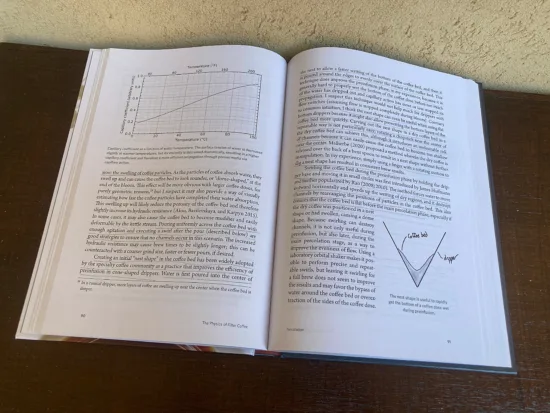
Physics of Brewing Basics
The central part, chapters five through seven, deals with the different tools used for coffee brewing: “Filters”, “Kettles and Agitation,” and “Drippers.”
The analysis of coffee filter materials and brands introduces an obvious (but often overlooked) consideration: the important effect of the coffee bed as a self-filter. Then, everything about kettles, agitation, and the impact of water flow on slurry brings up a surprising physics consideration: how studies on a specific subject can be applied to other subjects. For example, several studies on plunging jet reactors have helped us better understand the impact of water flow on coffee slurry.
Next, Jonathan discusses drippers: an introduction on geometry, flow, and bypass begins an overview of some of the most common drippers, with specifics, brew qualities, filters needed or recommended, etc.
Coffee Beans Beyond Taste
Chapters eight and nine focus on the analysis of coffee beans, beginning with “Freshness” which deals with what happens to a coffee when it is roasted, and how to preserve the freshness of the beans by combating its main enemies: weather, heat, humidity, oxygen, and UV rays.
Next is “Roasting, Terroir, Variety, and Processing,” where Jonathan proceeds with observations on coffee bean qualities that depend on factors such as roasting profile and country of origin. He includes eight flavor wheels, designated by coffee variety, and constructed through tasting profiles (both user-submitted and roaster-submitted) for 1,500 different bags of coffee.
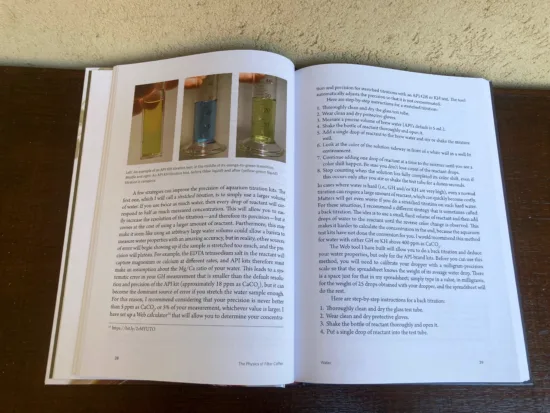
Technique, Tools, and Habits
Finally, the more technical chapters “Technique and Practical Applications” and “Tools and Data” close the book along with two appendices, which detail and summarize all the mathematical variables and calculations that appear in the book.
In this last part, Jonathan concludes with a description of habits that can be crucial to achieving good consistency in brewing, and how changing certain variables can change the outcome of a brew. Here he also includes his current V60 method, a good starting point for anyone interested in improving their brewing technique.
The Takeaway
In a couple of weeks I finished the book and paused to consider the many things I learned.
Despite an overload of notions and calculations, the book was easily understood, and I acknowledge that Jonathan succeeded in his mission to make physics easily understandable even to those who, like me, have never dealt with it too much.
Before I start experimenting with my daily brew, I turn to Jonathan for some final advice. My mind is now full of new discoveries and ideas to put into practice, but where should I start?
“The first step is to learn how to grind the right way by experimenting, and probably trying to grind coarser and see what happens,” Jonathan shares, and after reading his book, it all makes sense.
I close the book and begin preparing my daily V60.
ABOUT THE AUTHOR
Tanya Nanetti (she/her) is a specialty-coffee barista, a traveler, and a dreamer. When she’s not behind the coffee machine (or visiting some hidden corner of the world), she’s busy writing for Coffee Insurrection, a website about specialty coffee that she’s creating along with her boyfriend.
Subscribe and More!
Out now: It’s the June + July 2024 issue of Barista Magazine! Read it for free with our digital edition. And for more than three years’ worth of issues, visit our digital edition archives here.
You can order a hard copy of the magazine through our online store here, or start a subscription for one year or two.




